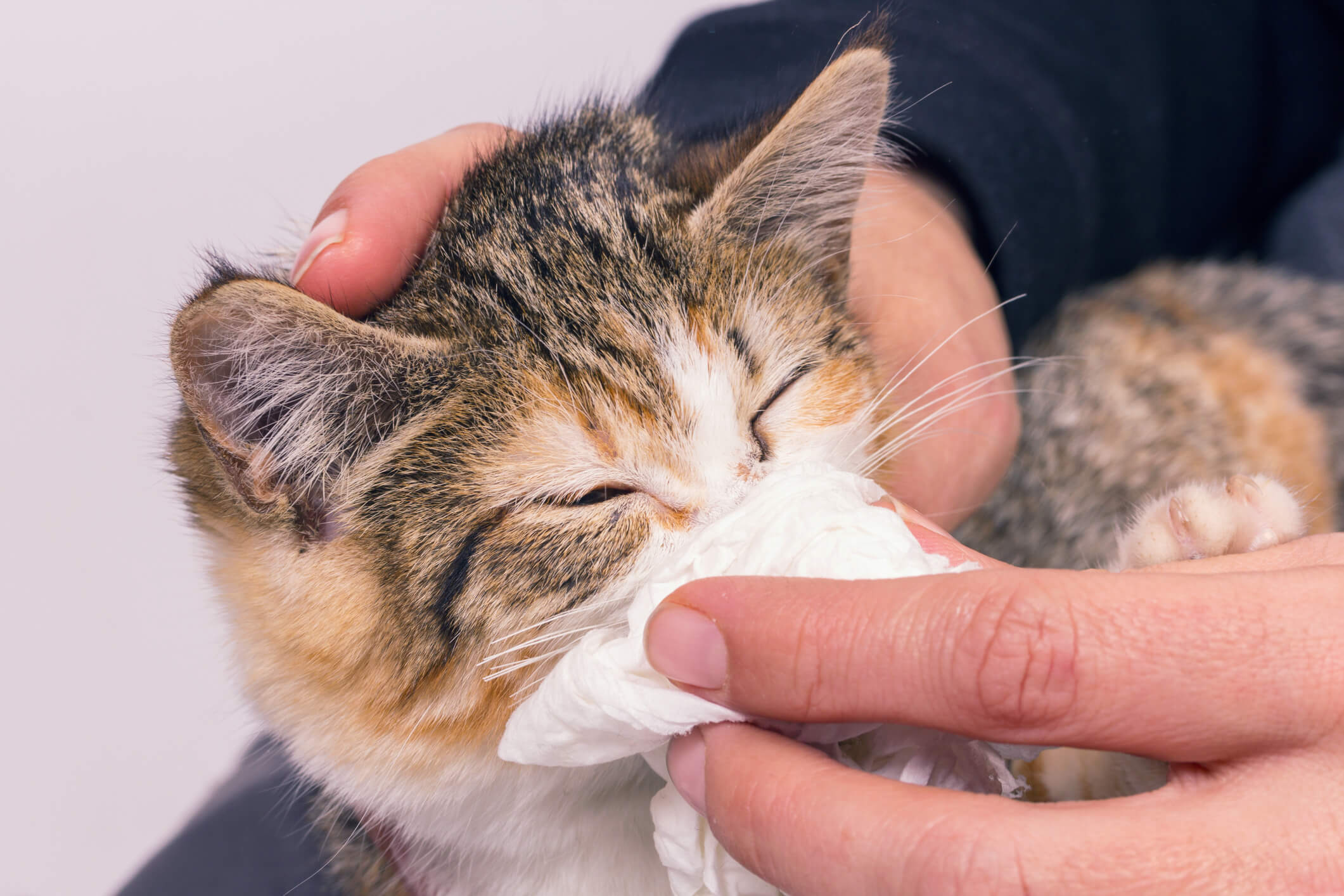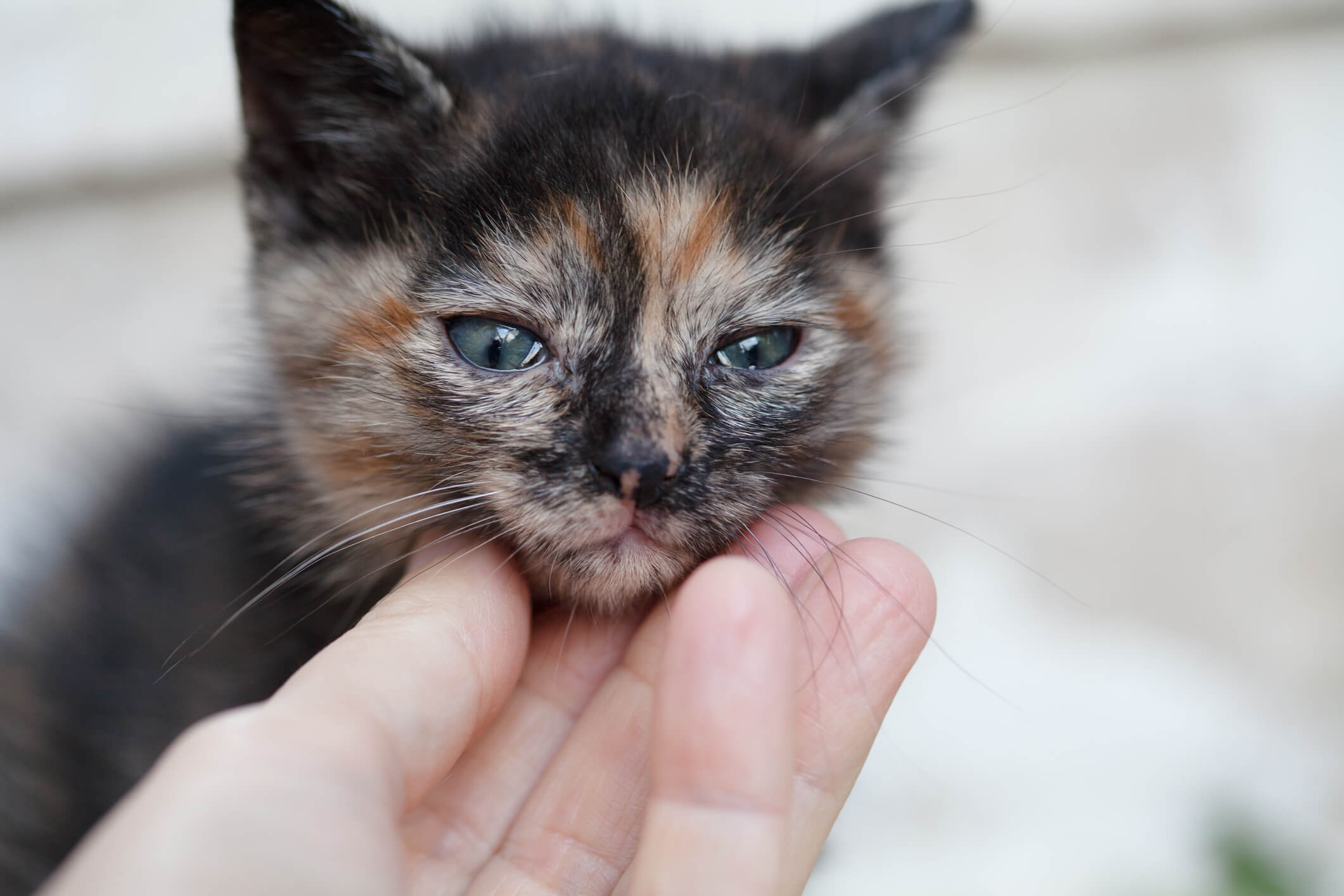
Top Tips for Treating Kitty Colds at Home
One day, you might wake up to find that your cat is acting a little under the weather. Leaky eyes, sneezing, runny nose, lethargy—these are all the symptoms of a kitty cold. When your kitty falls ill, you’ll want to do something about it!
After you check with a vet to make sure it’s not something worse, your cat might need some help while they’re on the mend. Try these home remedies for treating a kitty cold.
1. Consult a vet first
There’s no better way to help your cat than taking a trip to the vet. Many cat owners make the mistake of believing a cold is no big deal. While cats and humans experience some of the same symptoms, feline colds should never be taken lightly because they could develop into something worse. Owners should schedule a visit right away if their cat has difficulty breathing or shows signs of dehydration. Even if these symptoms aren’t present, double-check with a vet to make sure the cold is okay to treat at home.
Even if the cold is minor, owners can shorten the duration of their cat’s cold or flu by getting a quick diagnosis and administering any prescribed medications. It’s tough to see your kitty in distress, so bringing your cat to a vet sooner rather than later can minimize how much they have to suffer through their illness.
2. Clear the nasal passages
Once your vet has given a proper diagnosis, you can begin at-home treatment. Just like with humans, cats that have fallen under the weather have to battle congestion and a constant runny nose. Vets recommend cleaning their nostrils and leaky eyes with a clean, damp washcloth several times a day. Regular cleanings will help open up your cat’s airways and ease their discomfort.
You can also clean the mucus out of your cat’s nostrils with a bulb syringe that’s typically used for human babies. If you try out this method, use the syringe gently and pay attention to how your kitty reacts. Some cats won’t take kindly to this idea and will resist your efforts. It’s important not to force your cat to do something that makes them uncomfortable, especially when a cold is already bogging them down. Switch to the damp washcloth method, instead.

3. Use steam to relieve congestion
Another major symptom of kitty colds is congestion. Every owner can empathize with their poor cat about the annoyance of congested sinuses. Thankfully, one method for relieving congestion in humans works for cats, too—a steamy shower. The only difference is that you shouldn’t set your cat directly in the water because it’ll be too hot (and they won’t like it anyway). Instead, coax your kitty into the bathroom while the shower is running and let the warm, humid air open up their sinuses.
There are other ways to introduce moisture into the cat’s environment, too. Set up a humidifier and encourage your cat to sit near it for 30 minutes a day. Cats might be more inclined to go near a humidifier if you entice them with a cat bed and lots of warm blankets. Repeat this activity every day until symptoms subside and your kitty starts to feel better.
4. Warm up their food
Cats usually lose their appetite while they’re battling a cold. When their sinuses are all stuffed up, they can’t smell their delicious helping of food and might completely lose interest in eating at all. Your kitty might be more inclined to eat if you soften dry kibble with warm water or broth or heat up their canned food. Heat releases the natural flavors in food and makes it smell more appetizing, even to a congested kitty. Just make sure the food doesn’t get too hot!
If your cat still won’t touch their food, try luring them in with a tasty treat. Few kitties can resist the call of sardine juice, liver, chicken and tuna. One teaspoon per meal should do the trick. Owners can also feed their cats some types of baby food, but you should double-check with the vet to make sure you’re buying the right kind.

Keep a close eye on your cat’s health
Generally speaking, a little kitty cold is nothing to worry about. However, even if you’re positive it’s just a cold, it doesn’t hurt to ask the vet for a professional diagnosis. That way, you both can rule out any potential illnesses that are a lot more serious.
After the appointment, follow your vet’s guidance on which at-home remedies are safe and which ones to avoid. Your combined efforts will ensure your kitty gets back to their usual healthy self as quickly as possible.


